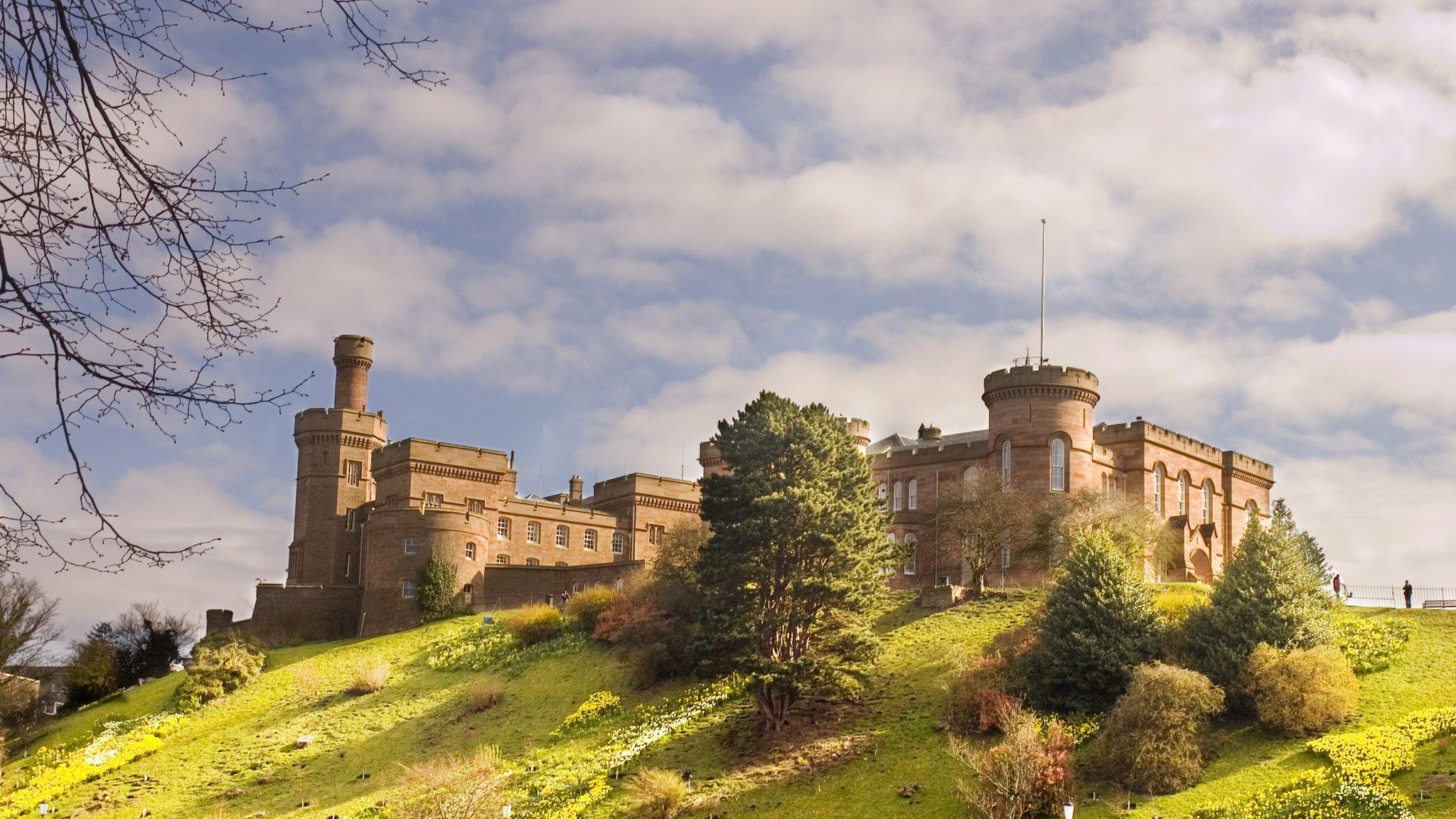Plan to open Inverness Castle's North Tower to tourists
- Published
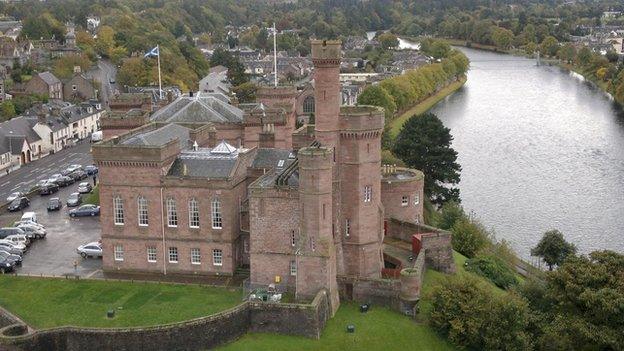
Highland Council owns the North Tower of Inverness Castle
Inverness Castle's North Tower and its look-out could be opened to the public in an effort to create a new tourist attraction.
Built in stages in the 1800s on the site of previous historic castles, the sprawling site was first used as a county hall and later a jail.
In more recent times it has served as Inverness Sheriff Court.
Highland Council owns the North Tower and is leading a study into how it could be made available to tourists.
The local authority joined the Scottish government in setting up a working group earlier this year in a broader project looking at the castle's future tourism potential.
But because the tower is owned by Highland Council it could be opened up to visitors sooner than other parts of the site.

The tower's look-out gives views over the city and surrounding hills
Chief Executive Steve Barron said: "Tourism is currently worth £88m per annum to the city of Inverness.
"Around one million tourists come to Inverness every year and we could increase those figures, if we could offer more attractions and keep visitors here longer."
The tower's look-out offers views across the city and the hills around Loch Ness and Ross-shire.

Stories of Inverness' old castle
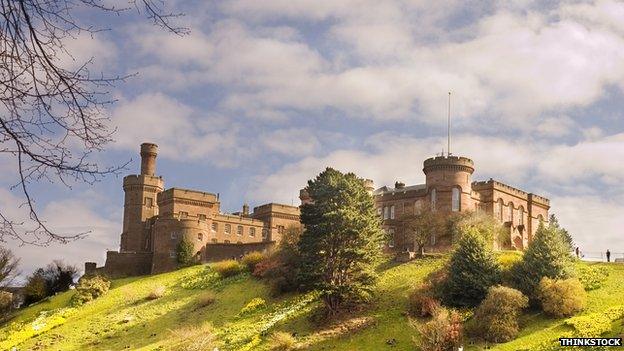
Inverness Castle has served as a county hall and a jail
The sandstone Inverness Castle was built in 1836 to plans drawn by architect William Burn.
It was constructed on a mound overlooking the city and the River Ness. In 1848, a building known as the North Block was added and served as a prison.
But a castle had occupied the site from possibly as far back as the 11th Century.
Over the centuries, the fortification fell under the control of the forces of Edward I, Robert the Bruce and James I, II and IV.
In 1562, it was attacked and damaged by soldiers loyal to Mary, Queen of Scots, before it was almost destroyed by Royalist troops in the 1600s.
Bonnie Prince Charlie's forces blew the castle up in 1746 to prevent it from falling into the hands of government troops.
It was said that a French sergeant, who had brought his poodle with him to Scotland, set off the explosives.
The soldier was caught in the blast, and his body was blown across to the opposite side of the River Ness. His dog survived.

In August, Tourism Minister Fergus Ewing said for years people have been calling for the castle to be made into a tourist attraction.
Earlier this year, the Inverness Courier newspaper started its Open the Castle campaign to support such calls.
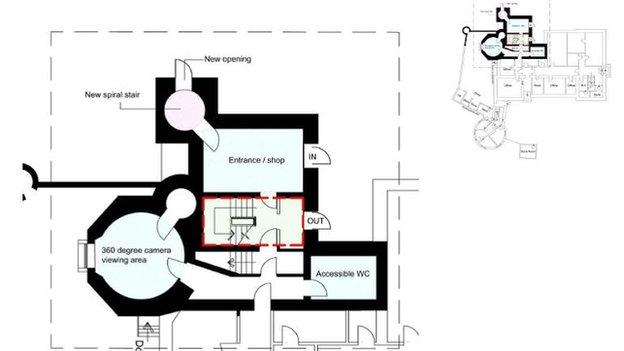
Mr Ewing said: "I've heard many suggestions and underlying them all is the message that the castle is the jewel in the city's crown.
"It's a building which has the potential to be a centrepiece for visitors to learn more about the city and showcase the Highlands as a tourist destination."
Council leader Drew Hendry said at the time that "for too long" visitors to the city had been able to look at the castle but were unable to get access.
He added: "That's not good enough for this city going forward."
- Published31 October 2014
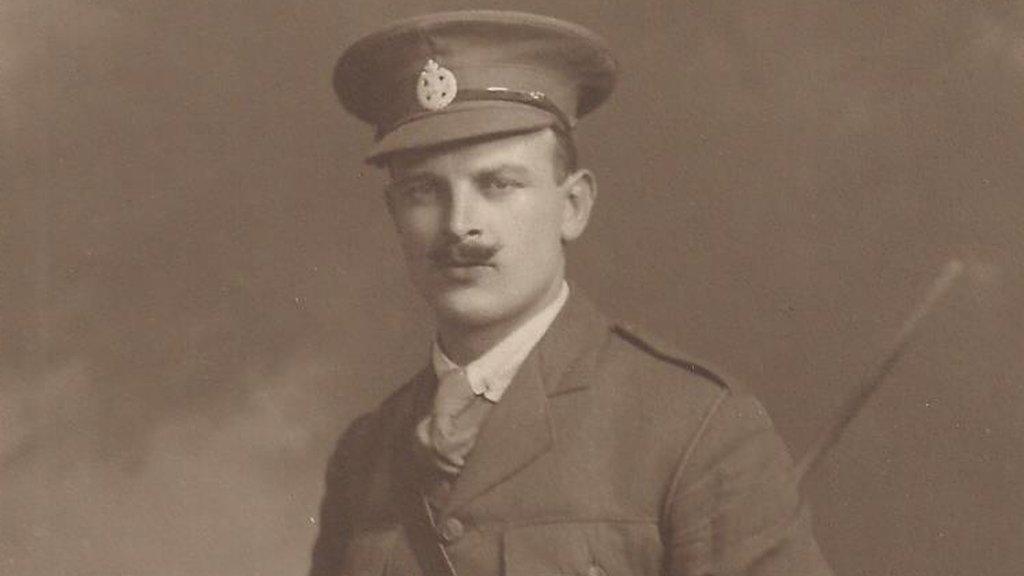
- Published15 August 2014
